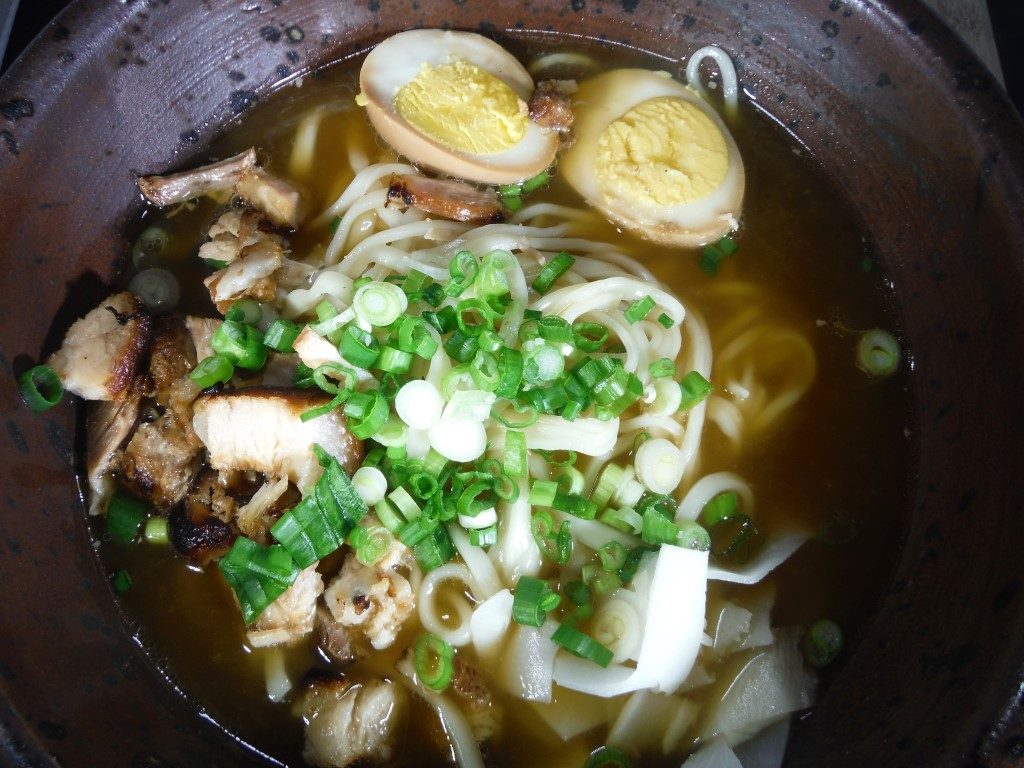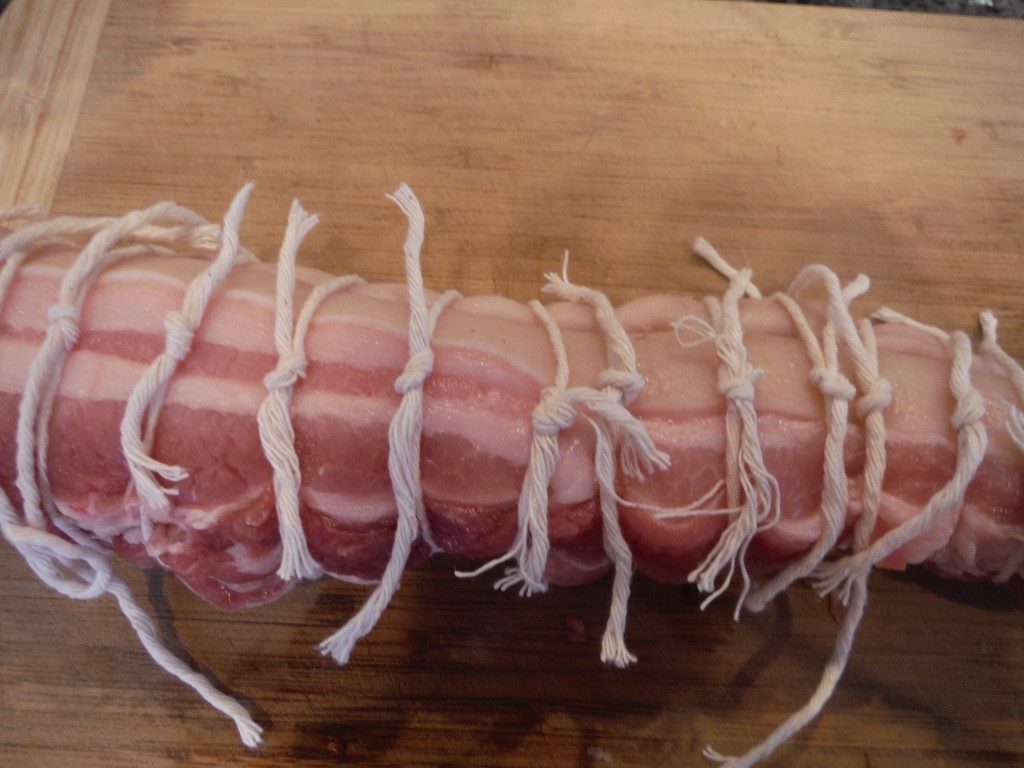Since we lived in Japan for 8 years, I am periodically in the mood to make Japanese food. On my last business trip to Dallas I spotted the Feb/Mar issue of “fine Cooking” magazine which had a picture of Chashu Ramen on its corner. Real ramen, with a good broth and fresh noodles is of course a world away from the instant stuff in packages which is so popular because it is quick and cheap. Real ramen is not expensive, but there is nothing quick about it. This was a two day project, although the actual work time was not that much.
A classic Japanese comedy of the 1980’s “Tampopo” was about two truck drivers who visited a ramen shop being run by a widow, who was trying hard but producing mediocre ramen. They took pity on her, and taught her how to make the perfect bowl of ramen before riding off into the sunset.
A tricky thing about ramen is getting the salt level right. A lot of restaurant ramen is more salty than is really good for us. On the other hand, under-seasoned ramen just does not taste right. The solution is to start with low sodium broths and to add salt until it reaches the right level. Salt can always be added, but once included it can only be diluted. The other tricky thing is getting the right noodles. New Grand Mart is run by Koreans, so I could find fresh Korean wheat noodles. They were tasty enough, but were not exactly the same as ramen noodles, which are made with alkaline water. The “fine Cooking” magazine also had an article on how to make ramen noodles from scratch, which may be the only way I can get the right noodles.
The three building blocks of this recipe are making a flavorful broth, making flavorful pork, making flavorful eggs, and then combining these with the noodles and some vegetables. This recipe makes 4 servings, and can be easily ratioed up for more servings.
For the Pork and Pork Broth
1 lb. pork belly, preferably with the skin on
4 cloves garlic, peeled and smashed
2 large scallions, cut into quarters
1-inch fresh ginger, peeled and cut into 4 slices
For the Marinade
2 cups soy sauce
½ cup mirin
¼ cup sugar
¼ cup honey
2 Tbs. white (shiro) miso
For the Marinated Eggs
4 large eggs at room temperature
1 cup reserved pork marinade
For the Ramen Broth
Reserved pork broth
3 cups unsalted chicken stock
2 cups vegetable broth (not too carrot heavy)
8 cloves garlic, peeled and smashed
2.5 inch piece of ginger, pealed and cut into 5 slices
Reserved pork marinade to taste
Salt and pepper to taste
For the final soup
20 oz. fresh ramen noodles (or equivalent in frozen or dried noodles)
Reserved pork marinade to taste
4 medium scallions, finely sliced
¼ cup shinachiku (menma – seasoned bamboo shoots), thinly sliced
4 marinated eggs, halved
2 sheets of nori, optional
To start, tie up the pork belly with butcher’s twine at half inch intervals to hold it together during the many cooking steps.
Put the pork belly in a large pot with enough water to cover. Bring to a boil and then reduce to a simmer for 15 minutes. Remove the pork, pour out the liquid, and clean the pot.
Put the pork belly back in the pot with the garlic, scallions, ginger, and enough water to barely cover the pork. Bring to a boil, reduce to a simmer, and cook partly uncovered until the pork is fork tender, about 1.5-2 hours. Turn the pork over midway through the cooking process to make sure it cooks evenly. Let the pork cool in the broth to keep it moist and flavorful. Remove the pork, and strain the broth through a fine strainer. Refrigerate the broth.
Marinade the pork by putting the cooked pork and the marinade ingredients, plus enough water to barely cover the pork. Bring to a boil, reduce to a simmer, and cook uncovered for an hour, stirring and flipping the pork occasionally. Let the pork cool in the marinade to keep it moist and flavorful. Wrap the cooled pork tightly in plastic and refrigerate it. Strain the marinade through a fine strainer and refrigerate until needed.
Marinade the eggs by boiling or steaming them to a medium point between soft and hard boiled (i.e. with a firm white but a slightly soft yolk. Peel the eggs and put them and a cup of the reserved pork marinade into a ziplock baggie, and marinade at least 8 hours and up to two days.
Make the ramen broth by defatting the pork broth and combining it in a large pot with the chicken stock, vegetable broth, garlic, and ginger. Bring to a boil, reduce to a simmer, and cook uncovered for about 20 minutes, skimming off any foam. Strain out the solids. Add some of the reserved marinade to taste (1/4-1/2 cup) and then season to taste with salt and pepper.
Finalize the pork, by removing the butchers twine, and broiling the pork on a foil-lined pan for about 5 minutes, flipping it once, until the outside is brown and crispy.
Cut the broiled pork into small pieces, throwing out any big fat chunks.
Assemble the soup by heating the broth, and warming the pork, bamboo shoots, and eggs, and cooking separately the noodles. In each large serving bowl place ¼ of the cooked noodles, 1.5-2 cups of the broth, a marinated egg cut in half, ¼ of the pork, and ¼ bamboo shoots. Sprinkle the scallion slices on top. (Add the optional nori.) Have a cup or so of the reserved marinade heated so that each person can add some to their final broth to taste. Note that in Japan this is served very hot!




